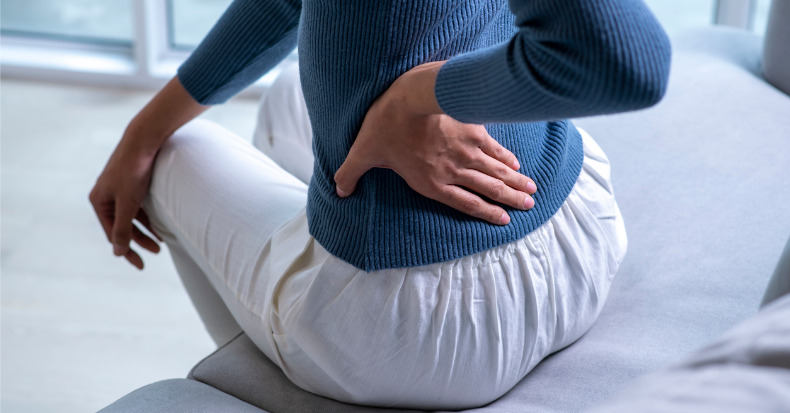While chronic hip pain can affect individuals of all ages and activity levels, 30-40% of those who have a history of playing sports and 12-15% of adults over age 60 may develop the condition. Although hip pain can result in a variety of diagnoses, a common form is coxa saltans, or snapping hip syndrome (SHS). This variety of hip pain is characterized by an audible or palpable snap of the hip joint, which can occur on one side or both hips, be painful or painless, and may not always have an obvious or knowable cause.
The snapping noise is due to the iliopsoas (hip flexor tendon) or the iliotibial (IT) band located on the side of the leg. When the iliopsoas is involved, this is referred to as the “internal type” of SHS, which is reproduced by extending and internally rotating the hip and moving into flexion and external rotation where the snap is reproduced as it rides over the femoral head. When the IT band is involved (referred as the “external type”), the snapping is due to the tendon sliding over the greater trochanter when the hip is moved from extension to flexion. Both types are referred to as extra-articular in nature as the cause is beyond the hip joint itself. There are also intra-articular causes of SHS from pathologies such as from loose bodies, torn labrum, and/or fracture. Intra-articular cases are generally more serious in nature and may require more aggressive treatment. To complicate matters, intra- and extra- articular SHS can co-occur, especially with the iliopsoas variant of SHS.
A comprehensive literature review found that people who frequently engage in activities that require hip movements at extreme rotations are more likely to develop symptomatic SHS—especially young gymnasts and ballet dancers. Due to the size and growth of the pelvis during development, young women are also at elevated SHS risk. Additionally, avid exercisers and obese/overweight individuals may both develop hypertrophy and inflammation of the psoas muscle and areas of the internal hip including the iliopsoas bursa, iliopsoas muscle, and other local structures, which can also increase their risk for snapping hip syndrome.
Thankfully, outside of pathologies that require immediate pharmaceutical or surgical intervention, most SHS cases respond to conservative management approaches, which includes chiropractic care. If you’re experiencing hip pain or discomfort with movement that’s creating a snapping noise, your chiropractor will assess your mobility, palpate around the entire region, assess your range of motion (spinal, pelvic, hip) and your gait, as well as perform provocative tests such as the FADIR test (flex, adduct, and internal rotation of the hip) to determine what type (or types) of SHS you have so that they can create an initial treatment plan. A multimodal treatment approach may include manual therapies and physiotherapies provided in the office in conjunction with activity modifications and specific exercises.



